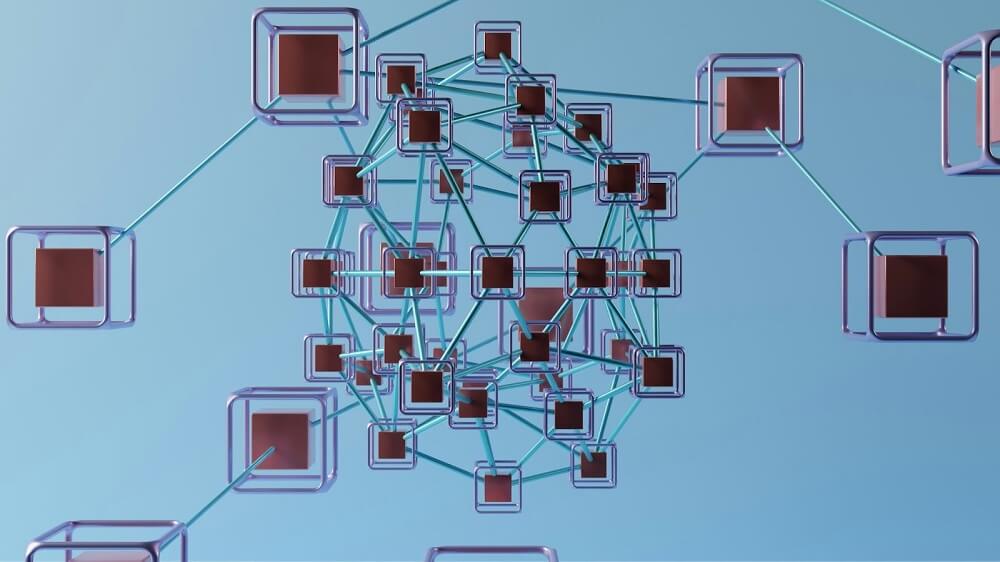
Introduction to the World of Web3: Addressing Contemporary Challenges with Modern Applications
The digital world has progressed from the early days of static web pages (Web1) to the interactive, user-driven Web2. Currently, we stand at the brink of a new era driven by web3 app development. Web3 application development signifies not only technological progress but also a significant change in the operation of the Internet (see the Topflight entry).
Web3 also embodies a decentralized and user-focused Internet, offering solutions to many of the challenges presented by its predecessors. This article is perfect for those interested in building web3 apps as it delves into how Web3 development solutions are tackling contemporary challenges and showcases the modern applications of Web3 technology.

What is Web3 Development?
To build a web3 app, you must understand web3 development. Web3 is based on decentralization, blockchain technology, smart contracts, and cryptographic security. It uses decentralized networks to guarantee that data is spread across many nodes. Web3 also employs blockchain technology to establish an unchangeable and transparent record of transactions, with data being stored across various nodes to minimize the chance of breaches and foster trust.
Contemporary Challenges in the Digital World
- Data Privacy and Security: The lack of personal data and security protection has been a pressing issue. Hackers often target centralized databases, leading to frequent and large-scale data breaches. Individuals also have minimal authority over their personal information, which is frequently exploited by corporations.
- Trust and Transparency: Due to the systems' centralized nature, users must trust institutions that may lack transparency and be susceptible to corruption. As a result, there is an increasing desire for more transparent and trustworthy systems without depending on intermediaries.
- Intermediary Dependence: Several digital transactions and operations heavily rely on intermediaries, such as banks and payment processors, which add expenses, slow down transactions, and can act as single points of failure.

Web3 App Development Solutions
Web3 app development represents a significant shift in how applications are built and interacted with on the Internet, emphasizing decentralization and blockchain technology. Developers creating Web3 apps typically focus on developing decentralized applications (DApps) that operate on a blockchain or a peer-to-peer network of nodes, which ensures that a single entity does not control them and can offer enhanced privacy and security to users. These applications often incorporate smart contracts, self-executing contracts with the terms directly written into code. This setup allows for a trustless environment where transactions and agreements can be carried out automatically without the need for intermediaries. In addition, Web3 development involves the integration of cryptocurrencies and tokens to facilitate transactions and incentivize behavior within the app ecosystem. This approach to application development is paving the way for new types of services and business models that are more transparent, resistant to censorship, and give users more control over their own data.
Decentralized Applications (DApps)
Unlike conventional apps, DApps operate on decentralized networks, ensuring no single entity controls the entire application. This decentralization improves security and resilience. Successful DApps such as Uniswap for decentralized finance (DeFi) and OpenSea for non-fungible tokens (NFTs) showcase the potential of these applications to transform traditional industries.
Blockchain Technology
Web3 relies on blockchain technology, which provides a secure and transparent approach to recording transactions. By using decentralized ledgers, blockchain ensures data is immutable and verifiable. Case studies like the IBM Food Trust blockchain demonstrate how blockchain can improve transparency and traceability in supply chains, thus reducing fraud and increasing efficiency.
Smart Contracts
Smart contracts are contracts with terms written directly into code, allowing them to self-execute. These contracts automatically enforce and execute agreements when specific conditions are met, eliminating the need for intermediaries. In finance, smart contracts enable automated lending and borrowing on platforms such as Aave, reducing costs and increasing efficiency.
Tokenization and Cryptocurrencies
Tokenization involves converting assets into digital tokens on a blockchain. Cryptocurrencies, as a form of token, introduce new economic models and payment systems that operate independently of traditional banking. Real-world implementations, like stablecoins for international remittances, demonstrate the transformative potential of these technologies.
Modern Applications of Web3 Technology
If Web3 technologies were absent from the global landscape, the world economy could potentially miss out on significant innovations and efficiencies decentralized systems offer. Web3 technologies enable a level of transparency, security, and user empowerment not easily achievable with traditional web platforms. The absence of such technologies would mean continued reliance on centralized systems, which can be prone to single points of failure, higher operational costs, and issues with data monopolies. The innovative financial instruments and investment opportunities provided by Web3, such as decentralized finance (DeFi) platforms, would be non-existent, limiting how individuals and businesses interact financially. Plus, the ability for individuals to have actual ownership and control over their digital assets and personal data would be diminished, potentially stifling new business models and consumer benefits driven by these capabilities. Without Web3 technologies, the world economy might experience slower progress in establishing a more equitable and efficient digital marketplace.
Finance (DeFi)
Decentralized Finance, or DeFi, stands out as a prominent use case of Web3. Platforms like MakerDAO and Compound within the DeFi space empower users to engage in lending, borrowing, and asset trading without depending on traditional financial institutions. These platforms provide increased accessibility, decreased costs, and improved transparency.
Supply Chain Management
Web3 technologies enhance supply chain visibility and traceability. For example, Walmart utilizes blockchain to monitor the journey of food items from the farm to the store shelf, ensuring food safety and minimizing waste. This degree of transparency goes beyond what traditional supply chain systems can achieve.
Digital Identity
Web3 presents solutions for self-sovereign identity, allowing users to control their digital identities without relying on central authorities. Projects such as uPort and Sovrin enable users to securely and privately manage their identities, resolving the issues of data breaches and identity theft.
Governance
Decentralized Autonomous Organizations (DAOs) introduce a new governance model made possible by Web3. These organizations operate under smart contract governance, where decisions are reached through a consensus mechanism involving token holders.

Conclusion
Web3 app development marks a significant change in how we create a Web3 app and engage with the digital world, presenting solutions to various issues posed by centralized systems. While we continue to investigate and pioneer in this field, the potential of Web3 to establish a more open, safe, and user-focused Internet becomes increasingly evident. The journey towards a fully decentralized web has just commenced, and its influence on society could parallel the impact of the Internet's advent.
Author:
|
Priya Raeesa Priya is an experienced mobile app developer with a flair for simplifying complex concepts. Her articles aim to demystify the app development world and empower others to create innovative mobile solutions. |


